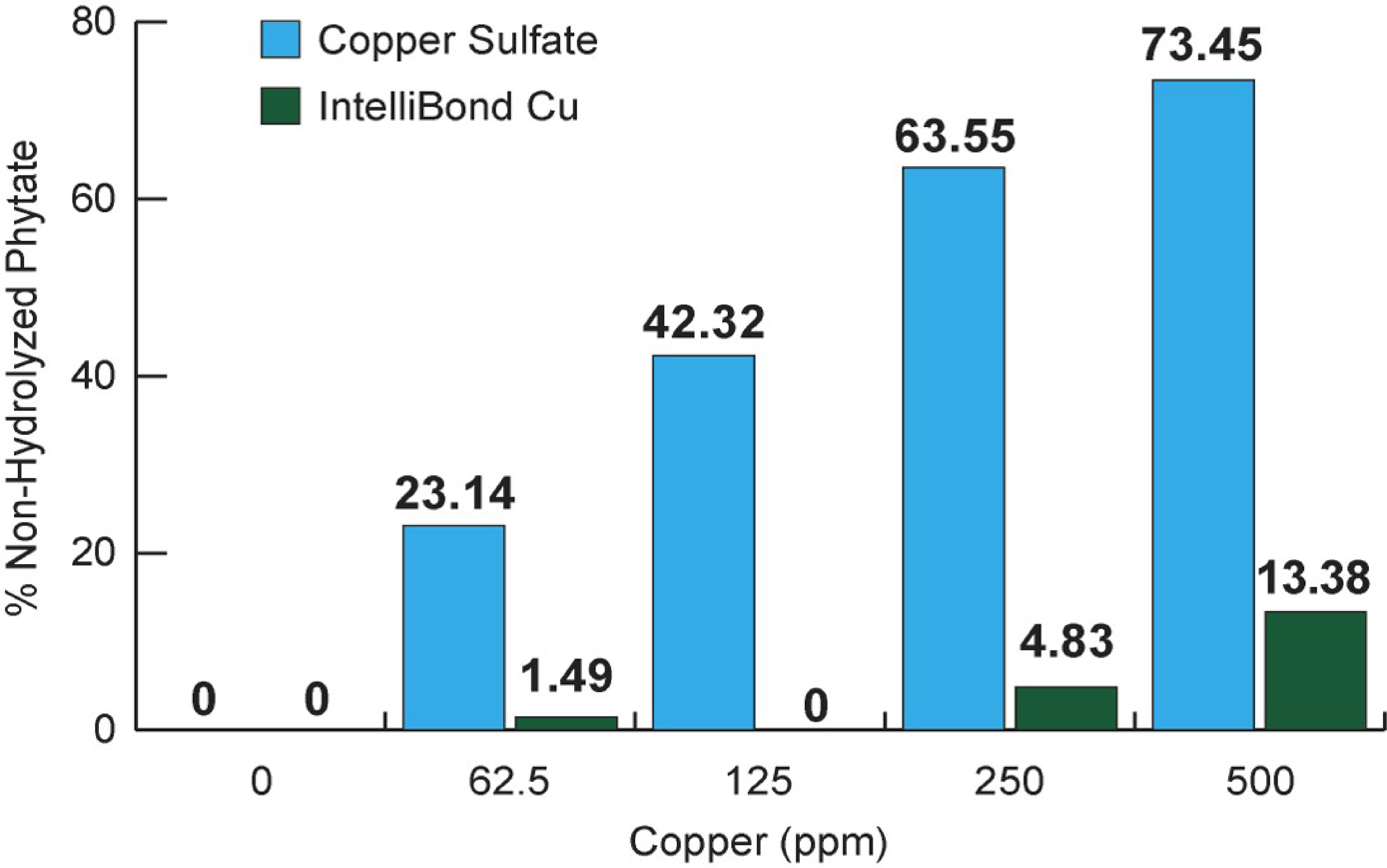



7 Research Takeaways: Rethinking sulfate sources of trace minerals in animal feed
Trouw Nutrition is sharing global research findings that show the source of trace mineral affects dairy cow performance. The “Time to Rethink the Use of Sulfates in Dairy Rations” presentation draws on research conducted internally and with multiple universities, writes Davi Brito de Araujo, manager for Trouw Nutrition’s Global Trace Mineral Program.Various trials and studies have found that replacing sulfate sources of trace minerals with hydroxychloride-based trace minerals improved the stability of nutrients in the ration, optimized rumen function and improved trace metal absorption.
Following are seven findings from the global research.
Research takeaway 1: Sulfate sources of trace minerals in the ration present multiple concerns
Multiple studies have identified concerns regarding sulfate minerals in the dairy ration. These include additional production costs incurred by reducing the stability and availability of ration ingredients or limiting the function of added vitamins and enzymes. The continued use of sulfates also may reduce the amount of milk cows produce and negatively influence the development of embryos. Additionally, as environmental considerations gain prominence in production practices, removing sulfate sources of trace minerals may reduce the level of monitored nutrients like phosphorus in the environment.
Research takeaway 2: Sulfate sources of trace minerals may reduce mineral absorption compared to other sources
Nutritional status, mineral solubility, availability to antagonists, physiological stress, species, gender, age and intestinal and rumen microflora are all factors that may influencer the efficiency of mineral absorption. To improve the precision of cattle diets, more predictable forms of trace mineral are needed. However, in a set of studies looking at uptake of hydroxy trace minerals, researchers found that hydroxy trace minerals were a more predictable mineral source than sulfate sources. During controlled research evaluations, cattle receiving hydroxy copper absorbed about twice as much copper and zinc from the hydroxy source compared with the sulfate-based sources.
Research takeaway 3: Sulfate sources of trade minerals may increase oxidation
A study examining the use of either copper sulfate at 200 parts per million (ppm) or 200ppm IntelliBond C in stored feed for 40 days found that vitamin E activity fell 32% by day 10 and 70% by day 20 in the feed that included copper sulfate. In diets that contain a nonprotected fat ingredient like soybean meal, DDGS or rapeseed meal, the sulfate sources may increase the rate of oxidation. Diets with an unprotected fat source and added dietary vitamin E, trigger the vitamin to engage as an anti-oxidant, to offset oxidation rather than being available for the animal. In a series of reaction studies, IntelliBond C outperformed copper-sulfate in terms of the stability of in-feed vitamin A, riboflavin and Vitamin E. The feeds with the hydroxy trace minerals additive also demonstrated reduced lipid oxidation and improved phytase activity, which has positive environmental implications.
Research takeaway 4: Sulfate trace minerals may increases phosphorus waste
In addition to reacting with multiple ingredients in the diet, copper sulfate use can significantly increase the amount of phosphorus excreted into the environment. In a feeding trial where 125ppm copper sulfate was included in the diet, 42% of phytate was non-hydrolyzed or not available for the cow to use. At the same inclusion level of IntelliBond C, there was 0% non-hydrolyzed phytate. (Figure 1) Sulfate use in rations can reduce phytate hydrolysis limiting the amount of phosphorus available for absorption by the animal allowing more to be excreted into the environment.
Research takeaway 5: Replacing sulfate mineral sources with no-sulfate trace minerals improves feed palatability
In addition to reducing the interaction between trace mineral supplement and nutrient elements in a ration, a series of studies at the University of Florida found calves (<350 kg) preferred diets with hydroxy trace minerals to diets with sulfate trace minerals. When inorganic trace minerals were replaced with hydroxy trace minerals in creep feed, intake moved from 20g per day to 160g per day as calves appeared to find the feed with hydroxychloride trace minerals more palatable. Similarly, in a voluntary selection trial, there was a 26% increase of feed intake with hydroxy trace mineral rather than sulfate sources of trace minerals.
Research takeaway 6: Sulfate sources of trace mineral may harm ruminal function, digestibility and VFA production
Copper sulfate products are known to be highly soluble and have antimicrobial properties in their ionic form, which is why they are utilized in foot bath applications. However, when included in feed, those properties may be limiting rumen functionality by reducing the function of ruminal bacteria as a result of the antimicrobial activity of the trace metal.
In a study conducted at Colorado State University, steers received diets without supplemental copper, zinc or manganese followed by a rumen bolus dose of 20ppm Cu, 60ppm Zn and 40 ppm Mn from either sulfate of IntelliBond feed additives. The amounts of soluble metal found in the rumen were significantly lower for steers getting IntelliBond additives. The increased levels of minerals present when sulfate minerals were used meant that more copper, zinc or manganese were free to attack ruminal bacteria and that larger amounts of those metals were not available for absorption by the animal..jpg)
Microbial activity in the rumen generates volatile fatty acids (VFA), which are utilized by the cow. Introducing 90ppm zinc sulfate into a diet compared to 90ppm of IntelliBond Z reduced total production of volatile fatty acids from 90 millimolar (mM) to 62mM. Similarly, a series of 10 studies examining trace mineral use and the digestibility of neutral detergent fiber (NDF) found that fiber digestibility increased when hydroxy mineral sources were used. That improvement in digestibility provides more energy for the cow, which could mean increased milk production, improved growth or better body reserves – depending on the cow’s stage of growth or production.
In dairy cows, every point of NFD digestibility improvement can mean an additional 250g of 4% fat-corrected milk (Oba & Allan, Michigan State Univ). Exchanging inorganic trace minerals for hydroxy trace minerals can add about three or four points of digestibility. The shift could mean up to an additional kilo of 4% fat-corrected milk per cow per day during transition and periods of higher lactation.
Research takeaway 7: Replacing sulfate sources with non-sulfate trace mineral sources may support reproduction
Improved mineral absorption may have implications for improved reproduction in high production dairy cows. A study conducted by U.C. Davis, California was conducted to track cows receiving hydroxy (IntelliBond) or an inorganic and organic combination of trace minerals for 10 weeks immediately following calving. Cows were super-ovulated at 50 days in milk. At 65 days in milk, embryos were collected through uterine flushing and evaluated. The number of high-quality embryos collected comparing all collected ova and fertilized ova were significantly increased for cows receiving the hydroxy trace mineral treatment.
“We can see the risk of using sulfate based trace minerals in ruminants and also the benefits of replacing sulfate trace mineral sources with IntelliBond on nutrient stability, feed stability, rumen function, mineral bioavailability and also the impact on the environment,” noted Davi Brito De Araujo.
TheCattleSite News Desk


